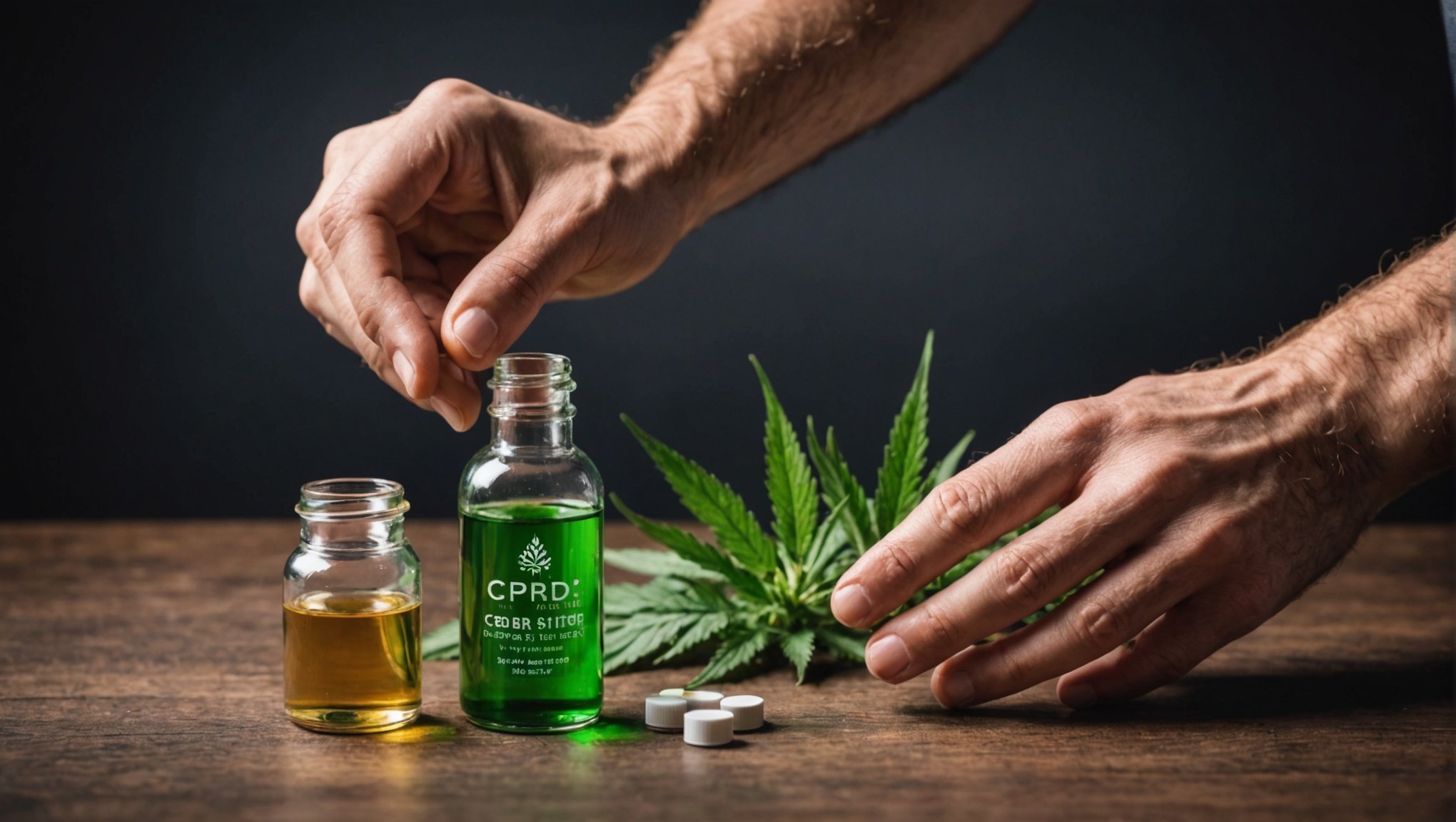Overview of CBD’s Role in Pain Relief
When it comes to CBD for pain relief, there has been increasing interest in its therapeutic potential, particularly within contact sports pain management. Understanding its effectiveness begins with an exploration of CBD’s properties.
Derived from the cannabis plant, CBD or cannabidiol is known for its potential to alleviate various types of discomfort without the psychoactive effects typically associated with THC. Athletes in contact sports often face unique challenges in managing pain due to the high-impact nature of their activities. Traditional pain relief methods, while effective, may carry risks of side effects or dependency.
In the same genre : Mastering Pre-Race Nutrition: Discover the Ultimate Carb Loading Techniques for Triathletes
Recent studies highlight CBD’s promise in addressing these challenges. Research indicates that CBD may influence the body’s endocannabinoid system, a network crucial in regulating pain and inflammation. This interaction suggests that CBD can potentially reduce discomfort by modulating pain signals.
However, the effectiveness of CBD can vary based on several factors, including dosage, frequency of use, and individual physiology. While promising, further research is essential to fully understand how CBD’s mechanisms work and to establish standardized treatment protocols for pain management, especially in the context of contact sports.
This might interest you : Revolutionize Your Run: The Impact of High-Tech Insole Sensors on Running Technique and Injury Prevention
Recent Research Findings on CBD
The analysis of current CBD research presents a diverse array of insights, particularly in clinical studies assessing its efficacy in pain relief.
Notable Clinical Trials
Significant clinical trials have examined the use of CBD for pain relief among athletes, showcasing varying methodologies and outcomes. These trials often compare CBD’s performance against traditional pain relief methods such as NSAIDs or opioids. Noteworthy trials involve randomized controlled trials where athletes were given controlled doses of CBD over a specific period. Outcomes frequently reported a measurable reduction in pain levels and improved recovery times, positioning CBD as a viable alternative to more conventional treatments.
Meta-Analyses and Systematic Reviews
Meta-analyses and systematic reviews of CBD’s efficacy in pain management consolidate findings across multiple studies. A consensus highlights that CBD offers promise in reducing chronic pain among athletes. However, variations in outcomes bring up questions about dose-specific effectiveness and individual differences. These discrepancies pose significant implications for athletes seeking reliable pain relief methods, emphasizing the need for personalized assessments.
Emerging Case Studies
Emerging case studies offer illuminating insights into individual experiences with CBD. Athletes often report significant pain relief, fewer side effects compared to traditional medications, and enhanced overall well-being. One testimonial encapsulates this, describing CBD as transformative in managing post-training pain. Such experiences underscore the potential of CBD, though further research remains critical for universally applicable guidelines.
Dosage Guidelines and Administration
Finding the right CBD dosage is crucial for experiencing effective pain relief, especially for athletes. There’s no one-size-fits-all answer, but starting with a low dose is generally advisable. Athletes typically begin with 20-40 mg of CBD daily, gradually increasing until the desired relief is achieved. The importance of individual response cannot be overstated, as factors like metabolism and weight significantly influence the preferred dosage.
CBD Administration Methods
Choosing a CBD administration method depends on personal preferences and needs. Oils and tinctures are popular for their flexible dosing and quick absorption. They’re administered sublingually, meaning a few drops under the tongue. Edibles such as gummies offer a tasty alternative, taking longer to absorb but providing steady, prolonged effects.
Contrarily, topicals like creams and balms are applied directly to the skin, targeting localized pain without systemic absorption. Each method has its pros and cons, but topicals are particularly helpful for athletes dealing with muscle soreness.
It’s essential to monitor how the body reacts to different methods and dosage adjustments. This can ensure effective pain management tailored to individual needs. Remember, the goal is balance—achieving the benefits of CBD while maintaining personal well-being.
Legal Considerations in Contact Sports
In recent years, the use of CBD in sports has been a topic of considerable interest. Understanding the CBD legality is crucial for athletes involved in contact sports. Various sports organizations have different sports regulations concerning the usage of CBD. For instance, the World Anti-Doping Agency (WADA) has taken a significant step by removing CBD from its list of prohibited substances. This shift offers athletes the opportunity to use CBD without the fear of sanctions, provided it’s free from THC, the psychoactive compound in cannabis.
Under anti-doping policies, athletes must ensure they comply with regulations regarding CBD use to avoid potential violations. The implications for athletes can be significant, affecting their careers and reputations. Therefore, it’s essential to remain informed about each sport’s regulations.
Athletes seeking to integrate CBD into their regimen should also consider national and international legal frameworks. While WADA’s policy is a positive move for CBD users, not all sports organizations align with it, and national laws can vary widely. Athletes should approach CBD use with caution, ensuring they are fully informed of all relevant sports regulations and legal requirements to maintain compliance and protect their professional standings.
Potential Side Effects and Safety
Before venturing into the use of CBD for pain management, especially for athletes, it is crucial to consider its potential side effects and safety profile. Understanding these nuances can help individual athletes make informed decisions about their health.
CBD is generally well-tolerated, but some common side effects may include drowsiness, dry mouth, and changes in appetite. For athletes, maintaining optimal health is paramount. Thus, they should be aware of how CBD could affect their performance and daily activities.
When using CBD alongside other medications, there is a potential for interactions. CBD can interact with certain drugs, such as blood thinners, by affecting how they are metabolized in the body. This could potentially increase or decrease the efficacy of such medications. It is advisable for athletes to consult healthcare professionals before combining CBD with their existing medication regimen.
Although research indicates that the safety profile of CBD is promising, the long-term effects remain under investigation. As more studies emerge, athletes should stay informed on the latest findings to ensure their health and performance are not compromised. Emphasizing caution and awareness can guide athletes in safely integrating CBD into their routine.
Practical Applications for Athletes
The use of CBD products by athletes is gaining traction, with CBD usage for athletes becoming a pivotal part of many pain management strategies. Understanding how to effectively integrate these products can enhance athletic performance and recovery.
Product Recommendations
For athletes, selecting the right CBD product is crucial. There are several reputable options in the market tailored for athletic needs. The effectiveness of these products largely depends on their formulation and the specific pain relief needs of the athlete. User feedback often highlights the superior quality and benefits of these CBD options, such as reducing inflammation and supporting muscle recovery. Experts also recommend checking for third-party testing to ensure safety and efficacy.
Integrating CBD into Pain Management Regimens
Effective pain management strategies involve integrating CBD with other pain relief methods. It’s essential to consult healthcare professionals when incorporating CBD into your regimen to ensure safe interactions with other treatments. Many athletes have reported success stories, highlighting the benefits of CBD in combination with their training routines, enhancing overall pain relief and improving recovery speeds.
Future Trends in CBD Research
The evolving landscape of CBD research focuses on new advancements in sports recovery formulations. As studies continue, we anticipate more targeted CBD solutions for athletes, potentially offering enhanced benefits and supporting more robust pain management techniques. These future trends underscore the growing importance of CBD usage for athletes in sporting circles.











